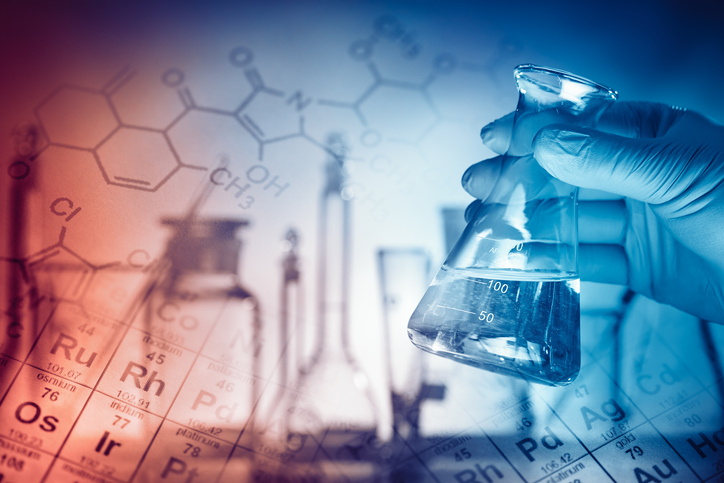Discover How Water Treatment Polymer Functions to Enhance Your Water Purification Refine
Water therapy polymers have emerged as crucial representatives in the realm of water filtration, working as both flocculants and coagulants to dramatically enhance the elimination of impurities. By assisting in particle gathering and boosting sedimentation performance, these compounds not just refine water top quality but additionally improve operational processes. As we check out the intricate systems behind their effectiveness, the ramifications for both ecological sustainability and expense decrease end up being significantly obvious. Yet, what details sorts of polymers exist, and exactly how do they tailor their activities to different purification systems?
What Are Water Therapy Polymers?
Water therapy polymers are specialized chemical compounds utilized in different procedures to boost the performance of water filtration and treatment systems. These polymers play a critical function in the removal of pollutants, consisting of put on hold solids, natural issue, and virus from water sources. They are usually categorized into natural, synthetic, and semi-synthetic polymers, each with unique attributes and applications.

Water therapy polymers function as flocculants, coagulants, or dispersants, helping with the jumble of particulates for simpler removal. Their performance can substantially lower the cost and power connected with conventional treatment methods, making them crucial parts in municipal and industrial water treatment centers. As water high quality guidelines come to be much more rigorous, the need for effective water therapy polymers remains to expand, underscoring their value in modern water management methods.
Device of Action
The device of action of water treatment polymers entails several vital processes that improve the elimination of pollutants from water. Largely, these polymers serve as flocculants, advertising the gathering of suspended bits right into larger collections recognized as flocs - water treatment polymer. This aggregation happens via fee neutralization, where the cationic polymers connect with negatively charged bits, reducing their electrostatic repulsion and enabling them to integrate
When flocs are created, their boosted dimension and weight facilitate sedimentation or filtration, therefore properly removing them from the water column. In addition, some polymers might exhibit adsorptive properties, binding to particular pollutants and boosting their elimination efficiency. This double activity not just boosts the physical splitting up of fragments but also help in the decrease of dissolved organic matter and heavy metals.

Sorts Of Water Therapy Polymers
Many sorts of water treatment polymers are made use of in different applications to improve the efficiency of contaminant removal procedures. These polymers can be generally categorized right into 3 major kinds: flocculants, coagulants, and dispersants.

Coagulants, on the other hand, are normally low-molecular-weight substances that reduce the effects of the charge of colloidal fragments. They promote the development of bigger aggregates, which can after that be gotten rid of much more conveniently. Common coagulants consist of aluminum sulfate and ferric chloride, usually utilized along with flocculants to enhance overall effectiveness.
Dispersants offer a see here different purpose; more information they support fragments in suspension, stopping them from agglomerating. This is particularly crucial in applications such as oil-water splitting up, where it is important to maintain contaminants spread until they can be efficiently eliminated.
The option of the ideal polymer type depends on the certain qualities of the water being dealt with and the wanted top quality of the last effluent.
Benefits of Using Polymers
Polymers play a vital duty in enhancing the efficiency of water therapy processes, providing a series of advantages that add to boosted operational performance. One of the main benefits of making use of polymers is their ability to dramatically enhance the performance of fragment removal throughout coagulation and flocculation. By promoting quicker and a lot more effective aggregation of fragments, polymers promote the clarification of water, bring about better result.
Furthermore, polymers can improve the sedimentation procedure, leading to lowered sludge quantities. This not only lowers disposal prices yet additionally reduces the ecological influence connected with waste administration. Furthermore, using water therapy polymers can lead to enhanced purification rates, enabling a lot more reliable usage of resources and reduced operational downtime.
Furthermore, polymers aid in maintaining the water chemistry, which can alleviate problems associated with scaling and rust in treatment systems. This stablizing adds to the durability and integrity of devices, inevitably lowering upkeep costs. The flexibility of polymers allows their application across numerous water therapy scenarios, making them important devices for attaining governing compliance and ensuring public health security.
Applications in Water Purification

Water purification procedures use a selection of polymers to boost therapy efficiency and make certain the removal of impurities. These polymers play vital functions in coagulation, flocculation, and sedimentation, effectively accumulating put on hold bits and promoting their removal from water. Coagulants, such as polyaluminum chloride, interact with contaminations, counteracting their costs and promoting the development of larger accumulations, understood as flocs.
Along with conventional coagulants, specialized polymers are employed in membrane layer filtration systems. read the full info here These polymers boost membrane layer efficiency by lowering fouling and extending operational lifespan. Additionally, polymeric adsorbents are utilized to target specific impurities, consisting of hefty steels and organic substances, giving a customized method to water treatment.
Polymers additionally find applications in sludge dewatering procedures, enhancing the efficiency of solid-liquid separation - water treatment polymer. By enhancing the dewatering attributes of sludge, these polymers reduce disposal costs and ecological impact
Conclusion
In final thought, water treatment polymers play an essential role in improving water purification processes by acting as efficient flocculants and coagulants. Overall, the consolidation of these specialized compounds is important for optimizing water therapy systems and making certain effective purification end results.